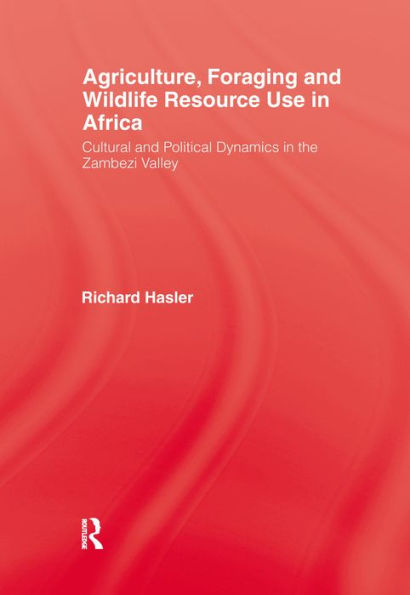First Published in 1996 Can wildlife utilization become a sustainable alternative means of land usage? This anthropological study reveals the intricate web of socio-cultural forces at play in wildlife management in Africa, shedding light on many issues central to the management of natural resources around the world. Based on two years of fieldwork in a remote part of the Zambezi valley, where buffalos and elephants compete with foragers and stream-bank cultivators and where safari operators, spirit mediums and wildlife committees exert conflicting rights over natural resources, this book charts the progress of Zimbabwe's experiment in the use of wildlife for the benefit of local communities through the Communal Areas Management Program for Indigenous Resources (CAMPFIRE). CAMPFIRE aims to redirect control and benefits of state-run wildlife management through local community-based wildlife utilization common property regimes. Focusing on the cultural and political dynamics associated with wildlife use, Hasler's book describes the village context, where conflicting and ambiguous rights, and vested interests in natural resources from ward, district, national and global levels, result in a confusion of jurisdictions concerning use, ownership and access to wildlife.
1143755895
Agriculture, Foraging and Wildlife Resource Use in Africa: Cultural and Political Dynamics in the Zambezi Valley
First Published in 1996 Can wildlife utilization become a sustainable alternative means of land usage? This anthropological study reveals the intricate web of socio-cultural forces at play in wildlife management in Africa, shedding light on many issues central to the management of natural resources around the world. Based on two years of fieldwork in a remote part of the Zambezi valley, where buffalos and elephants compete with foragers and stream-bank cultivators and where safari operators, spirit mediums and wildlife committees exert conflicting rights over natural resources, this book charts the progress of Zimbabwe's experiment in the use of wildlife for the benefit of local communities through the Communal Areas Management Program for Indigenous Resources (CAMPFIRE). CAMPFIRE aims to redirect control and benefits of state-run wildlife management through local community-based wildlife utilization common property regimes. Focusing on the cultural and political dynamics associated with wildlife use, Hasler's book describes the village context, where conflicting and ambiguous rights, and vested interests in natural resources from ward, district, national and global levels, result in a confusion of jurisdictions concerning use, ownership and access to wildlife.
39.99
In Stock
5
1

Agriculture, Foraging and Wildlife Resource Use in Africa: Cultural and Political Dynamics in the Zambezi Valley
230
Agriculture, Foraging and Wildlife Resource Use in Africa: Cultural and Political Dynamics in the Zambezi Valley
230Related collections and offers
39.99
In Stock

Product Details
| ISBN-13: | 9781136164415 |
|---|---|
| Publisher: | Taylor & Francis |
| Publication date: | 10/28/2013 |
| Sold by: | Barnes & Noble |
| Format: | eBook |
| Pages: | 230 |
| File size: | 2 MB |
About the Author
From the B&N Reads Blog
